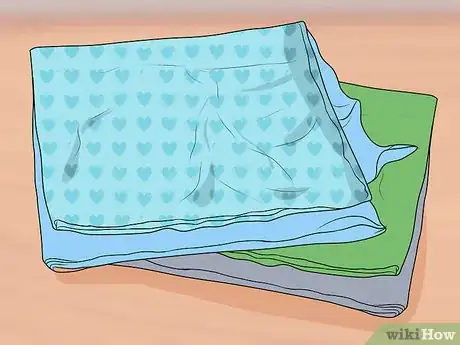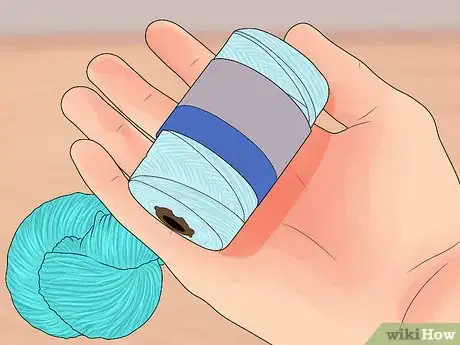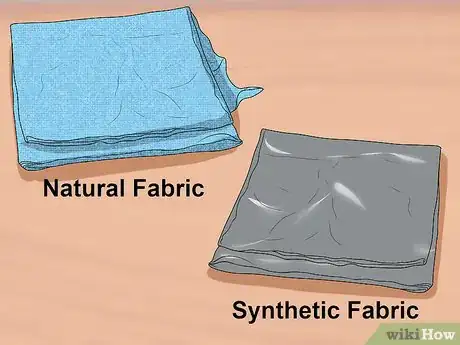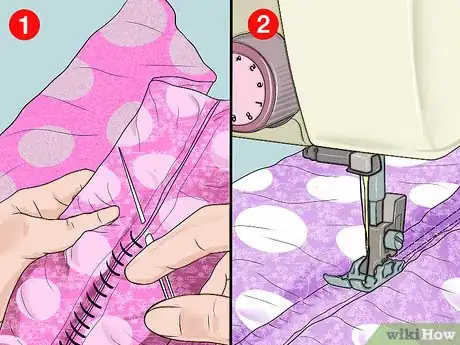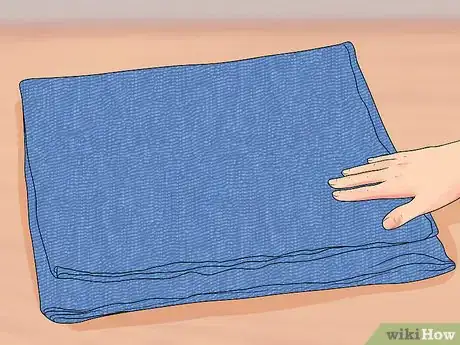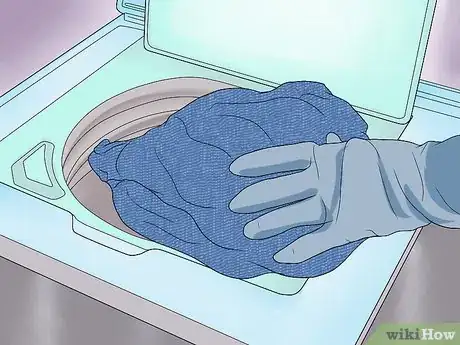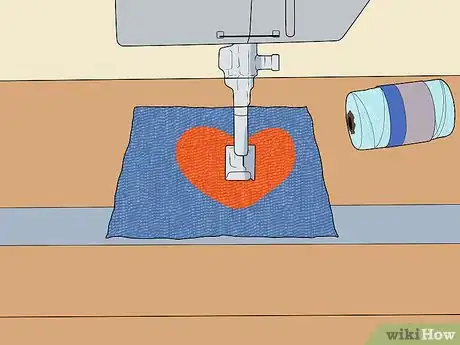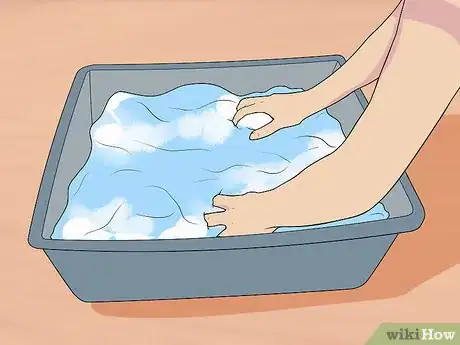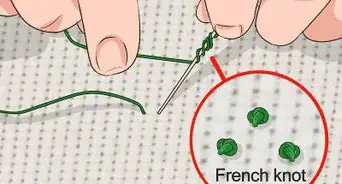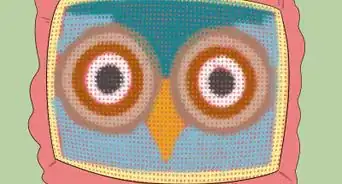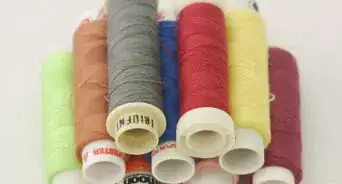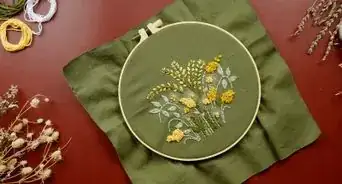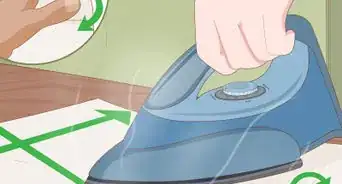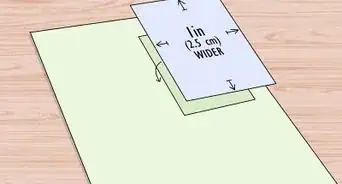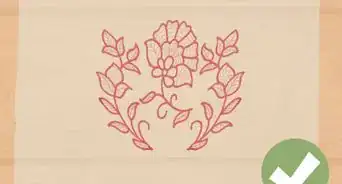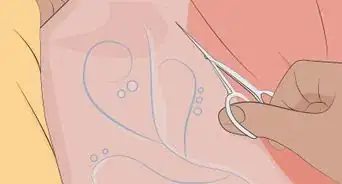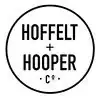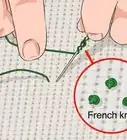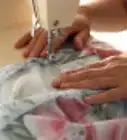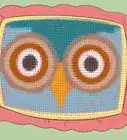X
This article was co-authored by Hoffelt & Hooper. Hoffelt & Hooper is a small family-owned and operated business that was founded in 2016. The Hoffelt & Hooper team creates beautiful, personalized pieces of art including embroidery and DIY kits.
There are 8 references cited in this article, which can be found at the bottom of the page.
This article has been viewed 107,136 times.
There are many embroidery fabrics to choose from. The type of fabric that you need for embroidery will depend on the type of embroidery you are undertaking. The following guide has some features to look for when seeking fabric for your next embroidery project.
Steps
Part 1
Part 1 of 2:
Things to Consider When Choosing the Fabric
Weight
-
1Consider the weight of your project as a whole. The fabric must be able to support the overall weight of your project. A lightweight fabric will likely pull and stretch if it has heavy yarn, beading and ribbon on it. A heavier weight fabric would be needed for a design involving wool, beading and similar heavier stitching mediums. For example, a design featuring a bunch of ribbon embroidered flowers would be heavier than a design of simple cross stitched flowers. If items such as buttons, bows, beading or other extraneous elements are to be added, you will need strong fabric that can hold its shape well.[1]
- For example, a delicate and lightweight fabric would work best for whitework, while a heavier fabric would be ideal for a long-stitch with wool.
-
2Consider the weight of the thread (cotton, yarn, silk, ribbon, etc.). The fabric must be able to support the weight and width of the thread you are using. When selecting the fabric, bear in mind the following:
- The fabric should not permit the thread to show through to the front of your project. The only exception to this is where you are deliberately wanting this effect but that is a rare occurrence.
- A delicate thread can be lost in a too heavy a fabric, while a heavy thread can cause a fragile fabric to pull apart or dominate the fabric too much.
- The weave of the fabric must be able to withstand the pressure of the thread's width passing through it (explained next).
- Avoid stretchy fabrics that can distort your design.[2]
Advertisement
Weave
-
1Check the strength and durability of the fabric's weave. The weave of the fabric must be strong enough to hold the threads in place and not be too overwhelming for the threads. Be alert to "thread count". This refers to the fabric's weave and determines the ability of the fabric to permit a needle to thread through it without difficulty. It is much easier to do a stitching project on fabric with loose weave than one with tight weave. Fabrics with loose weave include cotton, muslin, linen, Aida (used most often for cross-stitch or embroidering projects rather than as a clothing or sewing fabric) and even some repurposed fabrics as flour and feed sacks. You are looking for the lower thread count; if you want to understand this better, think about how high thread count is considered valuable for sheets––such a fabric would make it hard to embroider on the fabric.[3]
- Looser weaves will be less able to hold the threads but will be ideal for larger threads. Cotton, Aida, wool and linen are close weaves that are suitable for embroidery with thread or ribbon.
- Full weave fabrics usually allow you to do stitching that doesn't show holes or gaps between the stitching. For many projects, this is an important requirement for neatness and continuity.
- Tighter woven, fine fabric such as silk or voile may be more suitable if you're doing thread painting style embroidery, allowing you to highlight all of the stitches clearly.
- Some fabrics will "drown" a thread if they are have too high a plush. Contrast the weight of the thread with the plushness of the fabric to ensure that this is avoided before commencing a project. This will help you to avoid having to unpick hours of work.
- Use richer fabrics such as velvet for heavier threads. Such fabric is ideal for ribbon work.
-
2Choose between natural and synthetic fabrics. While this is a personal choice dependent on your own embroidery style, many stitchers prefer natural fabrics because they tend to be easier to work with. For example, cottons, linens, wools and muslins feel good to the touch and have good give when pushing the needle through them. Synthetics can be harder to work with, harder to push the needle through and less enjoyable to touch as you work on them. Synthetics can also be abrasive on fine threads. That said, it is down to what you need for the project and how comfortable you are using different fabric types; it's best to experiment and find your preferred mediums.[4]
Advertisement
Stitching
-
1Determine what type of stitching you'll be using most. Consider whether you will be making simple stitches or elaborate ones that build up in weight and size? The type of stitch has a definite impact on the type of fabric needed. The more elaborate stitching, such as ribbon flowers, the more the need for a heavier fabric backing to support the weight of the finished stitch. Consider the following:[5]
- If using ribbon, many strands of thread at once, wool, etc., then you are using heavy thread or stitching mediums and the fabric will need to be stronger to accommodate the stitching. If using Aida cloth, the count must be coarser (in the lower count levels around 7 to 12).
- If using single strands of cotton or embroidery thread, the fabric can be lightweight and even delicate. If using Aida cloth, the count can be much finer, even up to 28 if the thread is very delicate.
- Are you hand stitching or machine stitching? If using delicate fabric for embroidery, you are usually better off with hand stitching, while using a heavier weight fabric for machine stitching embroidery projects.[6]
Finish
-
1Determine the finish of your project that you prefer. How do you want the project to present when completed? The finish will be an important part of fabric choice because the fabric background will impact the overall feel of the project. Take a good look at the fabric choices you have to get a feel for what matches your project design. Touch the fabric too––how does it feel under your hands? This matters since you'll be handling the fabric a lot. Combine your "feel" with the above considerations and then choose what fits your project needs the best. Things to consider include:
- Matt fabric: This will produce a non-reflective surface. This is great for a busy embroidery piece, for rustic embroidery and for projects where the embroidery threads are shiny and bold. Most embroidery projects will be based on matt fabric, such as muslin, bark cloth, Osnaburg, unpolished cottons, Aida, calico, burlap, etc.
- Shiny fabric: This will produce a more polished appearance for the finish. Such a fabric creates a greater contrast between your project and the background. Shiny fabrics such as satin or synthetics may prove to be harder to work with; this will depend on the fabric type. Silk is shiny and many embroiderers enjoy working with it.
- Color: Many an embroidered project sticks with white, cream or beige. Sometimes black is an ideal background color to set off the thread colors. But it doesn't have to be stuck in this color range––you can expand your horizons and use any colored background that you consider suitable for the end result. If varying the choices, be sure to complement the background fabric color with the majority thread colors.[7]
- Patterned fabric: If the fabric has a pattern, be very careful that the pattern fits in with the design you're creating and doesn't "steal the show". If the pattern clashes, is too bold or is just too dominant, then you may find it is not suitable for the embroidery project as it overwhelms the entire design. Patterns that can work include small gingham checks without too much color variation or a single large fabric pattern design that forms the actual basis of what you are embroidering (such as stitching around an animal or plant design). Many stitchers find plain, natural colored fabrics are easier to work with, especially as a beginner but don't let this stop you from being more creative.[8]
Advertisement
End use
-
1Consider end use. This is a fairly important consideration because you want the embroidery to be able to withstand its intended use. There is a world of difference between fabric that can handle a tea party as a tablecloth and fabric that only ever gets hung on the wall as a decoration piece. If using the embroidery for tablecloths, napkins, hand towels and similar frequent use items that will suffer wear and tear, the fabric needs to be strong and easily washable. On the other hand, if the item is going to be decorative and displayed, more delicate fabrics that don't need washing that often can be used.[9]
Part 2
Part 2 of 2:
Preparing the Fabric for Embroidery
-
1Do a test piece if you're unsure about the choice. Cut off a small piece (square) of fabric that you'd like to use and do a small design using the exact stitching threads (and other embellishments) that you intend using. See how the fabric piece stands up and decide whether or not it's the right piece for your project.[10]
-
2Wash the fabric before using. This helps to ensure that the fabric is clean but also that it won't pucker when you begin stitching. Washing can pre-shrink any fabric prone to this, which will make an important difference in a project where shrinkage will spoil the design, such as quilting.[11]
- How the fabric is washed depends on what type of fabric you're using. If you're not sure, ask the retailer or manufacturer for their advice, or do an online search for that type of fabric and the washing suggestions. You can always wash a test piece if needed, to see how it reacts to the washing process.
-
3Press or iron the fabric before beginning. If you begin a project with wrinkly fabric, you'll end the project with wrinkly fabric too! After washing the fabric, be sure to press it as well. Of course, how you press it depends on the type of fabric; some fabrics may need a hot iron, some a cold iron, etc. You need to determine that before ironing, based on the fabric you have. If the fabric is wrinkle-free, then skip this step.
-
4Prepare the fabric if needed. In some cases, you may need to prepare the fabric before adding the embroidery elements, in order to strengthen it. You can add iron-on or tacked-on interfacing to the back of fabric to strengthen it for heavier stitching. This may be especially important for more delicate fabric where you intend to use heavy yarn or beading.
Advertisement
Expert Q&A
Did you know you can get premium answers for this article?
Unlock premium answers by supporting wikiHow
-
QuestionCan I embroider on thin fabric?
 Hoffelt & HooperHoffelt & Hooper is a small family-owned and operated business that was founded in 2016. The Hoffelt & Hooper team creates beautiful, personalized pieces of art including embroidery and DIY kits.
Hoffelt & HooperHoffelt & Hooper is a small family-owned and operated business that was founded in 2016. The Hoffelt & Hooper team creates beautiful, personalized pieces of art including embroidery and DIY kits.
Embroidery Experts
-
QuestionWhat is waste canvas?
 wikiHow Staff EditorThis answer was written by one of our trained team of researchers who validated it for accuracy and comprehensiveness.
wikiHow Staff EditorThis answer was written by one of our trained team of researchers who validated it for accuracy and comprehensiveness.
Staff Answer wikiHow Staff EditorStaff Answer
wikiHow Staff EditorStaff Answer -
QuestionHow can I stop the fabric edges fraying when I embroider?
 wikiHow Staff EditorThis answer was written by one of our trained team of researchers who validated it for accuracy and comprehensiveness.
wikiHow Staff EditorThis answer was written by one of our trained team of researchers who validated it for accuracy and comprehensiveness.
Staff Answer wikiHow Staff EditorStaff AnswerUse a basting stitch around the edges of the fabric. Fold the fabric edges over a little bit, then baste in place. After you've finished embroidery, simply slide these basted threads out and discard. Tape is another option, around the edges, but it makes the edges of the fabric stiff, which you may not like the feel of when working the embroidery.
wikiHow Staff EditorStaff AnswerUse a basting stitch around the edges of the fabric. Fold the fabric edges over a little bit, then baste in place. After you've finished embroidery, simply slide these basted threads out and discard. Tape is another option, around the edges, but it makes the edges of the fabric stiff, which you may not like the feel of when working the embroidery.
Advertisement
Warnings
- A fabric with a tight weave will feel resistant and hard to stitch on. While it may be possible to embroider on such a fabric, it will hurt your hands fairly quickly, which doesn't make it a very pleasant project to work on and it will also be mightily difficult work.⧼thumbs_response⧽
Advertisement
Things You'll Need
- Fabric
- Pattern or idea for project
- Thread
References
- ↑ https://www.needlenthread.com/2015/07/choosing-the-right-fabric-for-hand-embroidery.html
- ↑ https://pumora.com/hand-embroidery-for-beginners-guide/
- ↑ https://www.mybluprint.com/article/the-secret-to-successful-embroidery-its-all-about-that-base
- ↑ https://www.needlenthread.com/2015/07/choosing-the-right-fabric-for-hand-embroidery.html
- ↑ https://www.needlenthread.com/2015/07/choosing-the-right-fabric-for-hand-embroidery.html
- ↑ https://blog.hatchembroidery.com/choosing-the-right-fabric-for-your-embroidery/
- ↑ https://www.needlenthread.com/2015/07/choosing-the-right-fabric-for-hand-embroidery.html
- ↑ https://www.asicentral.com/news/how-to/may-2019/how-to-embroider-on-stripes-and-patterns/
- ↑ https://www.needlenthread.com/2015/07/choosing-the-right-fabric-for-hand-embroidery.html
About This Article
Advertisement
